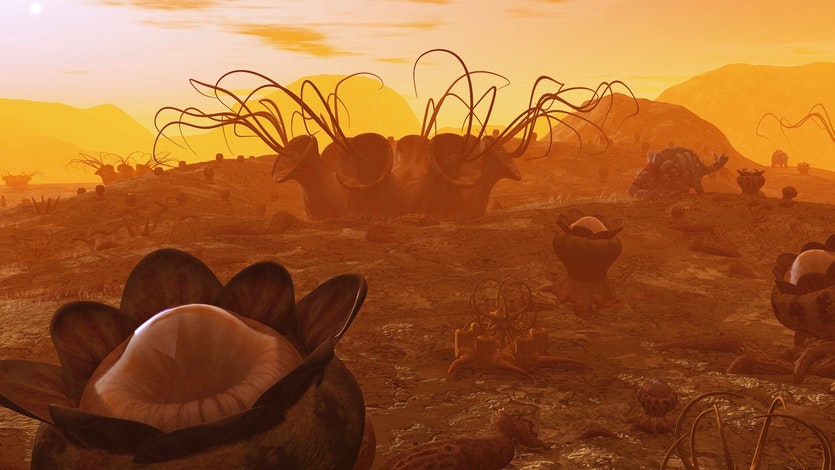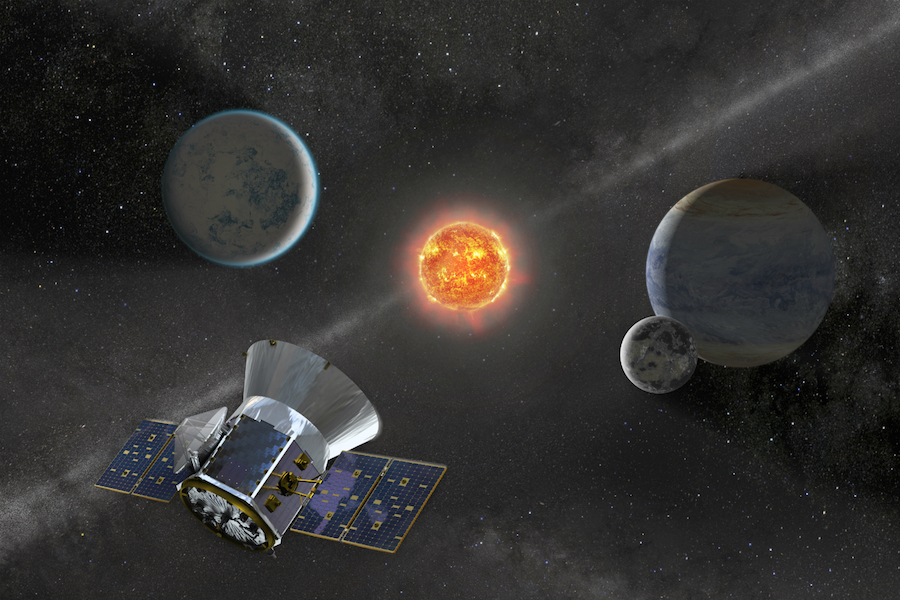
A new statistical analysis shows Earth-size planets are likely orbiting one in six Sun-like stars. The study is the most accurate estimate yet, researchers say, of the potential population of roughly Earth-size worlds in the Milky Way.

Using Earth's most powerful array of radio telescopes, astronomers have made the first observations of a circumplanetary disk of gas and dust like the one that is believed to have birthed the moons of Jupiter.

The exoplanet is orbiting a small star 35 light years from Earth and is about 80 percent the size of Earth. It orbits its host sun, an M dwarf known as L 98-59, every 2.25 days.

An international team of researchers recently detected two new Earth-like planets orbiting Teegarden’s Star, an M-type (red dwarf) star located just 12.5 light-years from the Solar System in the direction of the Aries constellation.

Accounting for the buildup of toxic gases predicted to occur in the atmospheres of most planets narrows the habitable zone for complex life by half and, in some cases, rules it out altogether, the study concludes.

Astronomers have discovered a very unusual planet in a distant solar system. The planet, called NGTS-4b, is three times the size of Earth, and about 20% smaller than Neptune and hotter than our very own Mercury.

Scientists working with data from the Kepler mission have discovered an additional 18 Earth-sized worlds. Among the 18 is the smallest exoplanet ever found.

Astronomers have found a third exoplanet orbiting a binary Kepler-47 star system 3,340 light years from Earth, the first, and so far only, multi-planet circumbinary solar system discovered to date.

The planet-hunting TESS spacecraft has found its first Earth-size planet orbiting a star located about 53 light years away. The star, HD 21749a, also hosts at least one other world, a warm “sub-Neptune” planet.

Hopes for finding life on four rocky exoplanets relatively close to Earth have been boosted by new modelling that shows biological systems could survive the intense and prolonged bursts of X-ray and UV radiation.

Scientists have discovered a giant exoplanet with a mass almost 13 times that of Jupiter in an evolved binary system. This is the first confirmation of an exoplanet in a system of this kind.

A research into how life evolved on Earth has shown that water alone does not guarantee life – nor does the presence of oxygen gas. And that two other major biosignatures, carbon dioxide and carbon monoxide could be needed.

Barnard b or GJ 699 b – might have microbes or other simple life in its environment as long as there is a lot of thermal activity within the planet itself. This would theoretically provide enough energy for life to survive.

According to new study, an extrasolar planet orbiting Barnard’s star, an M-type (red dwarf), that is just 6 light years away could actually support life, assuming the planet experiences enhanced geothermal activity.

The three confirmed planets discovered so far using TESS are all within 100 light-years of our solar system, substantially closer than the nearly 2,700 validated worlds detected using Kepler.